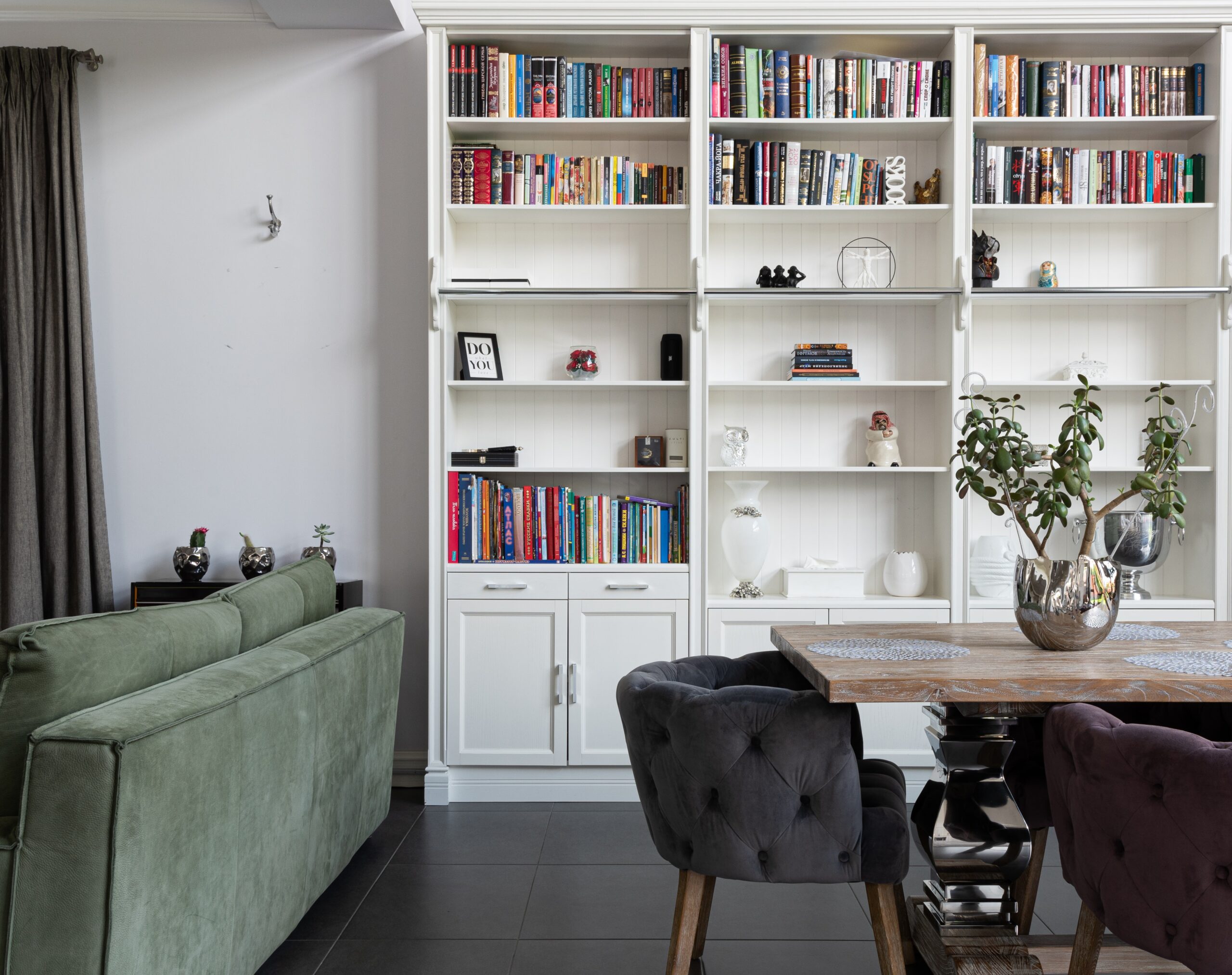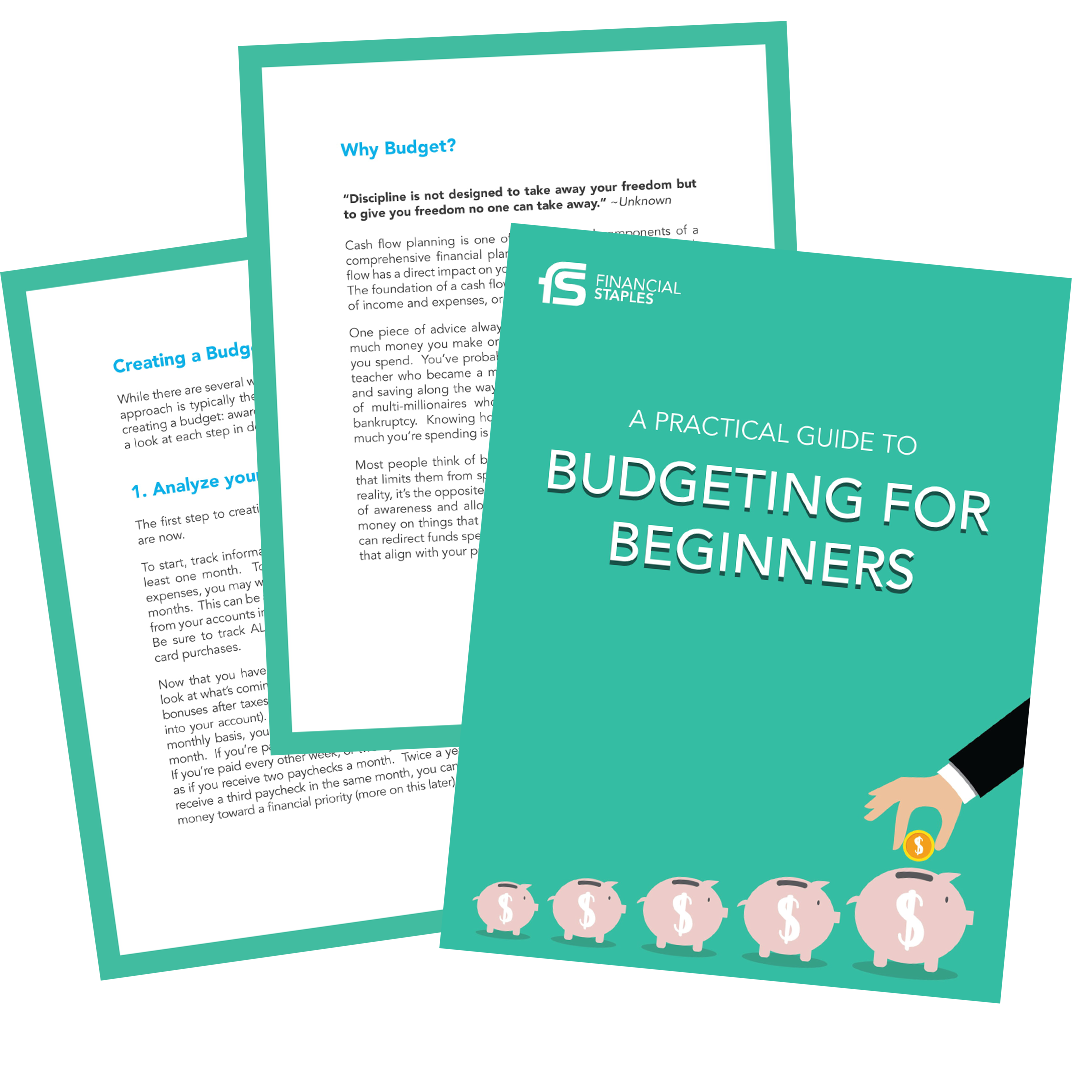I recently watched the documentary “The Minimalists: Less Is Now” on Netflix. Longtime friends Joshua Fields Milburn and Ryan Nicodemus share how they’ve learned to live with less and how this process has made their lives better. The documentary addresses consumerism in the United States and how it’s making many of us broke. The film claims that a combination of clever marketing strategies and social media has conditioned us to a life of mindless and excessive consumption, often to make us happier even though studies show that more money does not equal more happiness.
While watching “The Minimalists,” I realized that I’m an accidental minimalist. Growing up, I was always a careful spender – mostly out of necessity. I lived in dorms in college, so I found myself moving each year. The moving trend continued every year after college until I bought my first home, so I never had the opportunity to accumulate many things along the way. Even after owning a home, I didn’t have the desire to fill it with furniture and decorations. My friends often asked why my house wasn’t “fully decorated” or why I don’t enjoy shopping. Now that I’ve sold my house and downsized to an apartment, I couldn’t be happier.
Minimalism is more than just getting rid of old stuff or living a simple life. It’s about reducing distractions so you can focus on what really matters; what makes you happy. In my work, I aim to help clients understand what’s most important to them and connect the dots between what they value and how they spend their money. I find that there’s a clear correlation between intentional living and financial stability. It all starts with shifting your mindset.
Start by Understanding What Matters
Shifting your mindset towards intentional living starts with a bit of self-reflection. Take a look at the life you’ve created. Are you spending time, money, and energy on what matters the most to you?
“Tell me what you value and I might believe you, but show me your calendar and your bank statement, and I’ll show you what you really value.”
~ Peter Drucker
Take an inventory of how you’ve spent your time over the last six to twelve months. While your calendar can provide a general overview of how much time you spend in broad categories (such as work, travel, or time with friends), you may have to dig deeper into how you spend each day. In this digital era, our cell phones track our activity and, if we choose, will send us convenient (and sometimes embarrassing) reports of how much time we spend on them. You can also see a history of your calls and messages, which indicate how often you speak with people in your life. You may have heard that time, not money, is your most valuable resource. When you see how you spend your time, you can make adjustments based on what (or who) is most important to you. Be intentional about what you say “yes” to and learn how to say “no.” Aim to be present and spend quality time with loved ones. Also, avoid multitasking – giving a fraction of your attention to multiple things instead of giving your full attention to one.
One of the first exercises I complete with clients is to pull their bank account and credit card transactions over the last six to twelve months. I have them categorize each transaction so they can clearly see where their money goes. As they review the transactions, I ask them to reflect on the following:
- What expenses align with what’s most important to you?
- Are there any areas in which you want to spend more money? Why?
- Are there any areas in which you want to spend less money? Why?
Now that you understand how you spend your time and money, take a look at your possessions. Are your possessions and spending habits making your life easier, happier, or more convenient? Are you creating an emotional and financial burden instead? Just because you can buy something doesn’t mean you should.
“The Minimalists” suggest two exercises for evaluating your possessions. These exercises can bring more awareness and help you determine if you need to make adjustments. The first exercise is the 10/10 Material Possessions Theory, which is based loosely on a thought experiment in the book “Spent: Sex, Evolution, and Consumer Behavior” by Geoffrey Miller. In this exercise, write down your ten most expensive material possessions from the last decade. These belongings include big-ticket items, like your house, car, furniture, and jewelry. Next to that list, write down ten things that add the most value to your life. This includes experiences like having dinner with your family, catching a sunset, or watching your children play. Be honest with yourself and as specific as possible. Both of these lists will likely have zero things in common.
The second exercise is to group your possessions into three categories:
- Essentials: Things we can’t live without (such as food, clothing, and shelter).
- Nonessentials: Objects we want in our lives because they add value, serve a purpose or bring us joy.
- Other (junk): Things we think we like but don’t serve a purpose or bring us joy.
Your ideas or values around essential items can vary based on what’s important to you. For example, you could be a foodie, or you could just “eat to live.” Expressing yourself through your clothing and accessories could make you happy, or you could appreciate the time savings that comes with a capsule wardrobe. Eliminate things that do not serve you by donating them or throwing them away. Come back to these categories and consider them as you purchase new items.
Put Your Spending Habits into Perspective
We have countless influences around us, like friends and family, social media, or clever marketing and advertising strategies. Understanding these influences and how they affect your financial decisions gives you a better opportunity for financial stability. Those who are successful at building wealth make spending decisions that align with their values and financial goals. They tend to be indifferent or uninfluenced by what others are driving, buying, and wearing. In addition to understanding what matters, it’s also important to know what you like so you don’t fall for what’s trendy.
While it’s good to surround yourself with people who have a similar mindset, there are things you can do to reduce the temptation to buy things you don’t need. Understand your triggers and try to remove them when possible. Do you find yourself shopping to entertain yourself or to cope with some emotion? Are there certain stores, people, or social media pages that tempt you? Here are a few suggestions to help reduce your temptation to spend:
- Unsubscribe to marketing emails
- Change the privacy settings on your social media to minimize targeted advertisements
- Make a list before shopping to reduce distractions and buy less
- Avoid the clearance rack (unless there’s something you need there)
Another great way to put things in perspective is to look at the hidden cost of purchases. Your spending decisions are not just about the money. How much time, energy, and focus are you giving up when you make a spontaneous purchase? How much does your spending habits or excess debt result in unnecessary worry, stress, or attachment?
One way to think about the time you give up when making purchases is to compare them to your income. Let’s say you make $100,000 per year, or approximately $48 per hour based on a typical 40-hour workweek. A $100 dinner equals two hours of work. A $50,000 car equals six months of work. A $400,000 home equals four years of work. Low monthly payments can give the illusion that a large purchase is affordable or you’re getting a good deal. Those monthly payments combined could be stretching your finances to the limit, which can impact the amount of future time you’re giving up.
Consider how many more years you’ll have to postpone financial independence or adjust your lifestyle down the road. After all, financial independence means you work because you want to, not because you have to.
“The price of anything is the amount of life you exchange for it.”
– Henry David Thoreau
Practical Ways to Live With Less
There are no set guidelines for how to adopt a minimalist lifestyle. Your values are unique to you and can change throughout your life. “The Minimalists” suggest several practical ways to live with less. Here are a few of my favorites:
- Stop accumulating: If you’ve evaluated what’s important and reduced clutter, you don’t want to undo all of your hard work by accumulating more things. When you buy something, such as a new piece of clothing, donate or get rid of one you already own. Evaluate purchases and set rules around them. For example, you may set a limit of $100 for impulse purchases, or wait a certain period of time before purchasing to decide if it’s something you really want.
- Go digital: Some items are essential to keep, like financial documents, while others have sentimental value, like photo albums. One of the easiest ways to reduce clutter is to go digital. Scan documents that are not necessary to store in paper form. Scan photographs and keep them in the cloud. You can also reduce the amount of paperwork you receive by opting for electronic statements when possible.
- Rethink the way you gift: We’re programmed to give gifts based on commercial holidays instead of giving as a way to show our love and appreciation for one another. Consider giving deliberately, not out of obligation. People are more likely to appreciate a spontaneous gift over one tied to a specific date. When you give a gift, consider experiences (like tickets to an event, massage, meal service, activities, or vacation) or consumables (like a nice bottle of wine, local coffee or treats, or baked goods).
- Don’t upgrade just because: Living with less doesn’t mean you never buy things; it just means you buy things with intention. You may feel pressure to buy the latest and greatest item for no valid reason. There will always be something new, whether it’s electronics, appliances, or a car. When tempted with the urgency to upgrade an item, ask yourself: Can you go without it? Can you repair what you already have? If you replace it, does it have to be new?
I attribute much of my financial stability to being a natural minimalist. By focusing on my personal values and what makes me happy, I’m able to prioritize my spending, hold myself accountable to my goals, and simplify my life. I’m the first to admit that I’m not perfect. I’m guilty of wasting time on social media and having “organized clutter.” As with many things in my life, I follow the 80/20 method – be intentional and aim to stay on track 80 percent of the time while being spontaneous and indulgent 20 percent of the time.
More than anything, minimalism is a mindset shift that brings countless benefits. You don’t have to downsize to a tiny house with only a few possessions. You also don’t have to eat or wear the same thing every day. Minimalism looks different for each of us. Find what makes you happy and do more of it. Build a life that serves you, not a life that you’re a slave to. Be intentional about building a life that’s in line with your values. A life that’s uniquely your own.
Are you interested in learning how to be more intentional with your money? Let’s chat!
Did you enjoy reading this post? Want financial inspiration, education, and updates delivered straight to your inbox? Sign up for our newsletter!
Disclaimer: This article is provided for general information and illustration purposes only. Nothing contained in the material constitutes tax advice, a recommendation for purchase or sale of any security, or investment advisory services. I encourage you to consult a financial planner, accountant, and/or legal counsel for advice specific to your situation. Reproduction of this material is prohibited without written permission from Chloe Moore, and all rights are reserved. Read the full disclaimer here.


